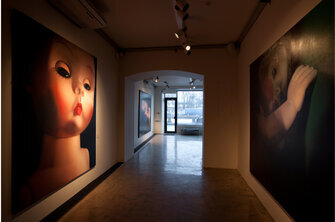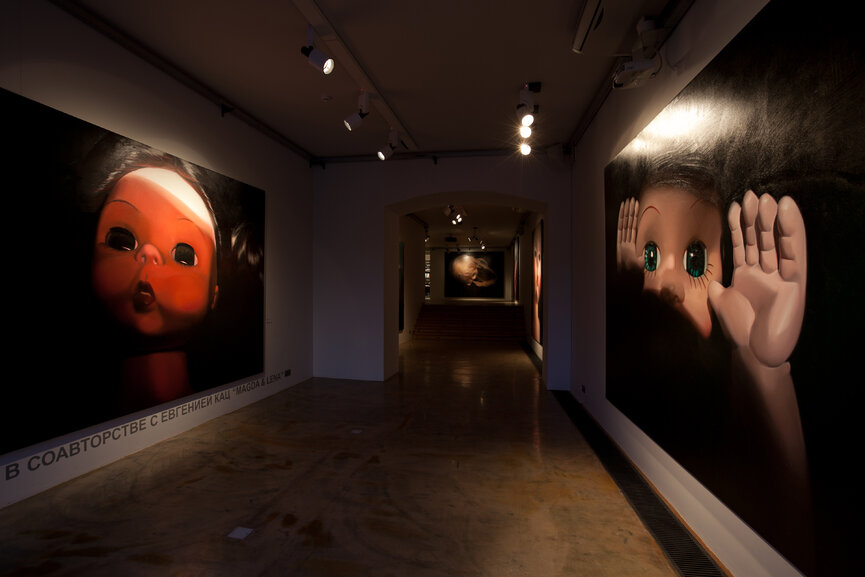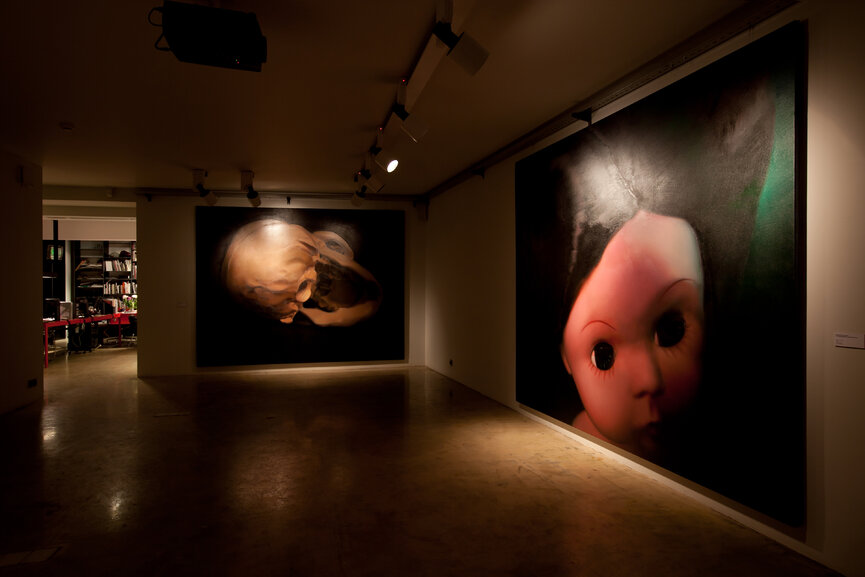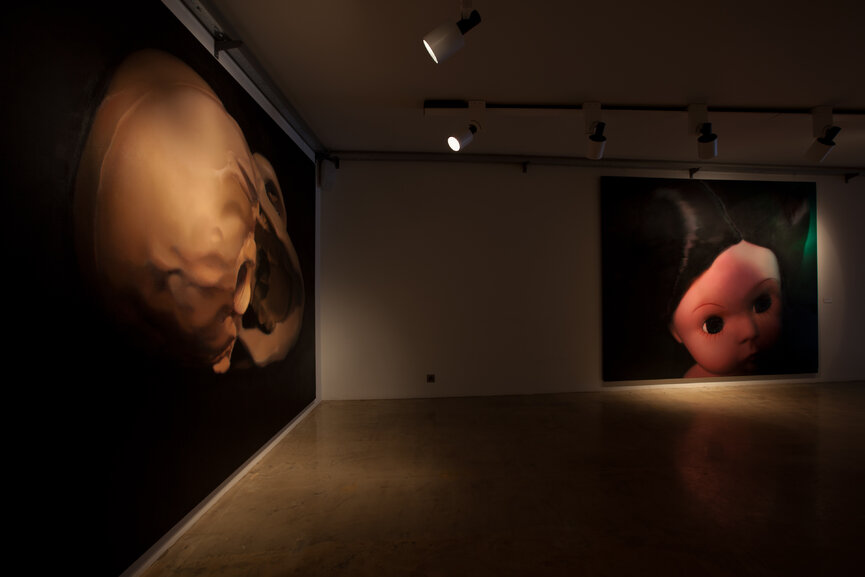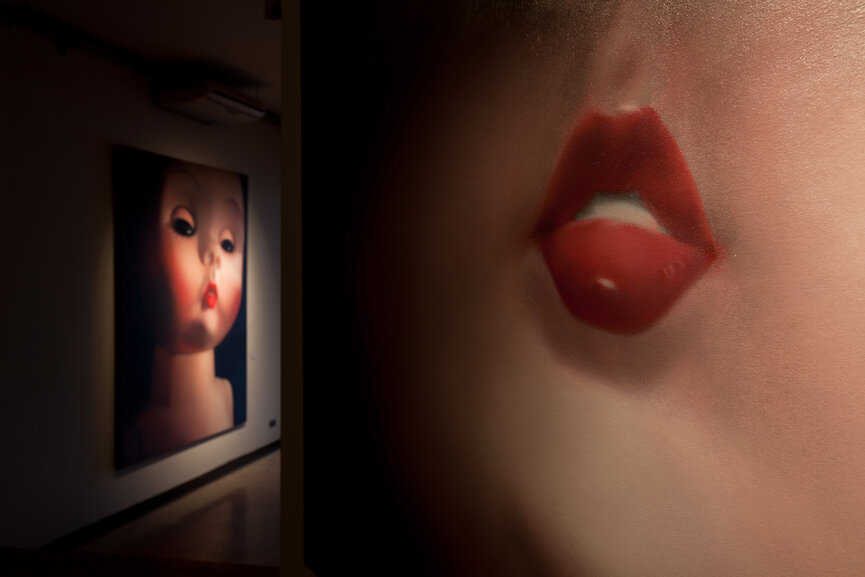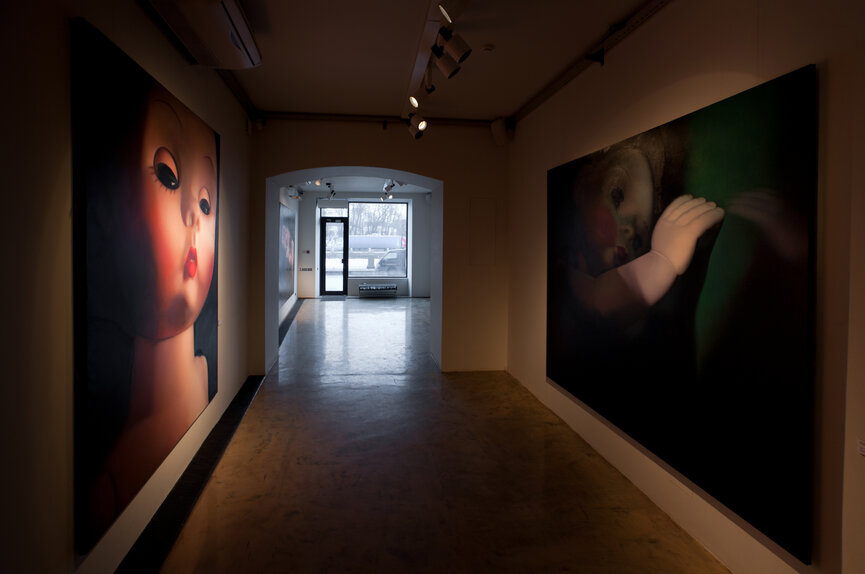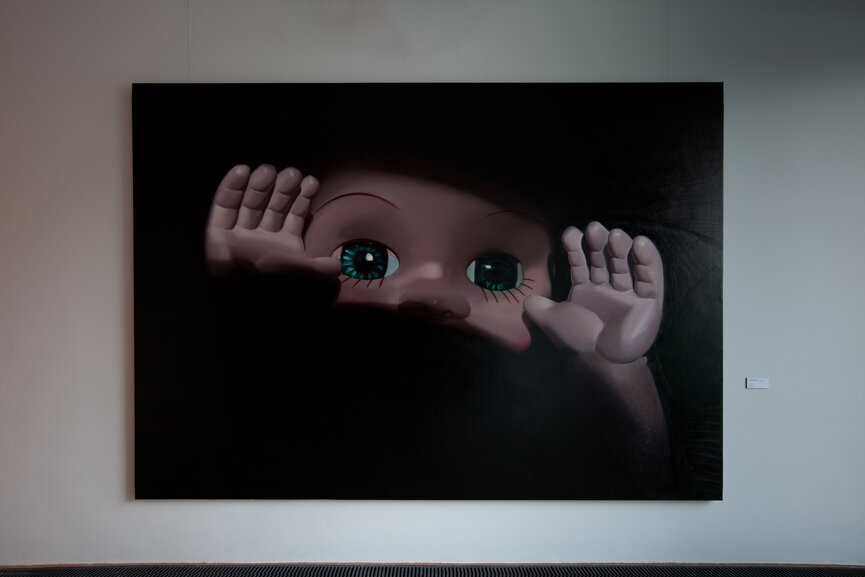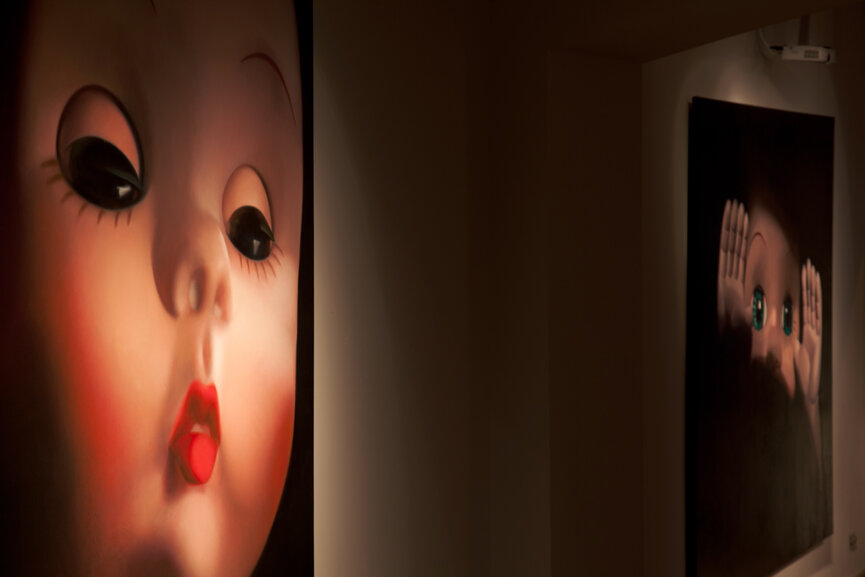MAGDA&LENA. DMITRY GRETSKY in co-authorship with EVGENIA KATZ.
Magda and Lena are dolls. Or perhaps Magda and Lena are little girls who play with dolls. Or perhaps one of them, for example, Magda, is a doll, and the other, for example, Lena, is her little mistress. Dmitry Gretsky, who paints close-ups of the dolls, does not provide an answer to which one of these two owners of female names is real and which one is plastic, and this is what lends intrigue to the entire exhibit.
Dmitry Gretsky received a traditional education for a Russian artist: Serovka (the Serov Art School), then Repinka (the Repin State Art Academy), the Drawing department. This sort of background guarantees an ability to work with materials and mastery of the trade of a graphic artist. However, gaining an awareness of which “sore point” will become the starting point of an art career and then combining trade skills with a clear design concept is a step that doesn’t depend on the education received at all. Each artist must take this step individually, and it is this step that actually makes the artist.
For Dmitry Gretsky, the “sore point” turned out to be the theme of animate and inanimate. In the 21st century, this subject ends up being much more complicated than in, for example, the 19th century, and more than simply dividing things into flesh and plastic. Gretsky paints close-up “portraits” of dolls: peachy cheeks, glassy eyes wide open, an inviting plump little mouth with parted lips. But if all of this rosy-cheeked pudginess would have been just an imitation of childishness for the unspoiled viewers of two centuries past, seen as the purity and innocence of a porcelain baby doll, our present-day connoisseurs discern a sexual proposal, and specifically a commercial proposal, in the shimmer of inanimate flesh. And the fact that the body up for consumption is an artificial one does not matter; after all, the sex icons of our time – models, actresses, singers – are also Photoshopped by glossy magazines to complete plastic fakeness, and pictures on a computer screen along with merchandise from the assortment at the sex shops do quite well at competing with real live women. Beauty and attractiveness are no longer associated with life; a clear boundary has been drawn between the world of desire and everyday life. For Gretsky, what’s most significant is that this boundary, which runs through the brains of living people, coincides with the boundary between real and artificial. Gretsky has dedicated his project to exploring it.
It is this boundary that he makes the “Magda&Lena” series about. Gretsky’s “Magdas” and “Lenas” with their made-up faces and super-long synthetic lashes are deliberately artificial – no one would mistake them for real people – but at the same time they have a much stronger resemblance to the beauties in advertisements than do any of the female viewers in the gallery, even the most well-groomed of them. And they share a resemblance not because they possess some exceptional type of beauty, but specifically because they are artificial. In this sense, Gretsky’s dolls have inherited the European myth of the artificial man, who becomes a superman only by virtue of his artificiality. But while Golem and Frankenstein were summoned to invoke terror of the machine-come-to-life for our great-great-grandfather readers, for our own contemporaries the horror of seeing Gretsky’s pop-eyed and thick-lipped dolls has to be mixed with delight and desire.
Gretsky portrays seven doll faces on seven large format canvases. It’s impossible to tell whether these are different dolls or one and the same from different angles. After all, they are all the same, and we are accustomed to thinking that this is exactly what differentiates manufactured products from us, real people. But anyone who tries to recall at least a dozen models who advertise brand-name clothing or perfume, or a dozen female TV show hosts, or a dozen porno actresses, will immediately run into the problem that they all blend together into some sort of aggregate plastic format, similar to Gretsky’s dolls. Which one is Magda here, and which is Lena? It doesn’t matter. Names are needed only to have a way to somehow designate the models on the pages of a fashion magazine, though actually only the brand of the dresses they are wearing is important: “Magda is wearing a coat from Dolce & Gabbana and Prada glasses. Lena is in Cavalli jeans with a belt from Chanel, and her shoes are Jimmy Choo.” This is people who are identical to each other, while brands lend them individuality. So how can real live people keep from aspiring to become brands, shedding everything human, and taking on everything that is mass-produced?
It is easiest to look at Dmitry Gretsky’s art in a leftist vein, as criticism of a consumer society with its generation of marketing idols and its disregard for the details of real life. But it’s much deeper than that. Gretsky’s paintings make the viewer consider the question of the essence of humanity. Of what makes us people, and how it does so, even in an age of total dehumanization of public space, when popularity and beauty not only do not assume humaneness, but actually oppose it. Of what criteria we really use to differentiate between living and artificial. Of what it truly is that makes a doll not resemble a live person, even though it might look better and more presentable than one. Of what life is.
It is particularly from this viewpoint, removed from the hot issues of the day, that the “Magda&Lena” project becomes not only a protest against the ideology of consumption of everything in the world and women in particular, as much as a profound exploration of how living and nonliving co-exist in the consciousness of the modern mind. How, together, they change our relationship with the basis of human existence. How, for example, eroticism is transformed from the utmost vivacious manifestation of life into an unachievable ideal – even more unachievable in that it’s dead. How the image of a made-up baby doll turns into the standard of beauty, while the image of a real adult woman ceases to be that standard. How, finally, we lose the ability to differentiate between real and fake – or, on the contrary, the fake becomes our reality.
And purely from a technological standpoint, Gretsky’s works operate like a time-delayed landmine buried under the modern mass aesthetic. Formally, they can be categorized in the genre of photorealism: they resemble “repaintings” of photographs. The artist painstakingly copies every bit of glare, every spot of reflected light on the cheeks of his nonliving models. Nonetheless, all the realism of Gretsky’s painting technique is full of irony. It is as if the artist is laughing at himself, perfectly understanding that no Michelangelo could ever make his model more attractive than an average designer working for a salary can, whose job description includes “polishing” the portraits of photo models. Gretsky simultaneously both copies the work of Photoshop slaves and speaks ironically of it. More importantly, he forces the viewer to contemplate the difference between a designer’s print and the living life that remains behind the scenes.
Anna Matveeva
